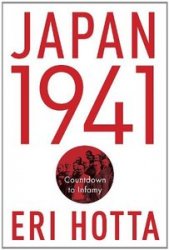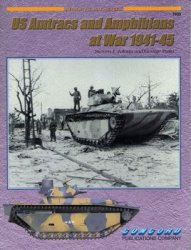As in other areas of Asia and Africa, the encounter with
the West in the nineteenth and twentieth centuries stimulated
a cultural renaissance in the Middle East. Muslim
authors translated Western works into Arabic and Persian
and began to experiment with new literary forms. The advent
of modern newspapers and magazines eliminated the
traditional differences between the oral and written languages.
The resulting fused language included colloquial
speech, borrowed Western words, and ancient words resurrected
from indigenous languages.
The new literature dealt with a number of new themes.
The rise in national consciousness stimulated interest in
historical traditions. Writers also switched from religious
to secular themes and addressed the problems of this
world and the means of rectifying them. Furthermore, literature
was no longer the exclusive domain of the elite
but was increasingly written for the broader mass of the
population.
Iran has produced one of the most prominent national
literatures in the contemporary Middle East. Since World
War II, Iranian literature has been hampered somewhat
by political considerations, since it has been expected
to serve first the Pahlavi monarchy and more recently
the Islamic Republic. Nevertheless, Iranian writers are
among the most prolific in the region and often write
in prose, which has finally been accepted as the equal
of poetry. Perhaps the most outstanding Iranian author
of the twentieth century was short-story writer Sadeq Hedayat.
Hedayat was obsessed with the frailty and absurdity
of life and wrote with compassion about the problems of
ordinary human beings. Frustrated and disillusioned at
the government’s suppression of individual liberties, he
committed suicide in 1951. Like Japan’s Mishima Yukio,
Hedayat later became a cult figure among his country’s
youth.
Despite the male-oriented nature of Iranian society,
many of the new writers were women. Since the revolution,
the chador, or veiled garment, has become the central
metaphor in Iranian women’s writing. Advocates
praise the veil as the last bastion of defense against Western
cultural imperialism. Behind the veil, the Islamic
woman can breathe freely, unpolluted by foreign exploitation
and moral corruption. They see the veil as the
courageous woman’s weapon against Western efforts to
dominate the Iranian soul. Other Iranian women, however,
consider the veil a “mobile prison” or an oppressive
anachronism from the Dark Ages. A few use the pen as a
weapon in a crusade to liberate their sisters and enable
them to make their own choices. As one writer, Sousan
Azadi, expressed it, “As I pulled the chador over me, I felt
a heaviness descending over me. I was hidden and in hiding.
There was nothing visible left of Sousan Azadi.” 3
Like Iran, Egypt in the twentieth century has experienced
a flowering of literature accelerated by the establishment
of the Egyptian republic in the early 1950s. The
most illustrious contemporary Egyptian writer is Naguib
Mahfouz (b. 1911), who won the Nobel Prize in literature
in 1988. His Cairo Trilogy, published in 1952, chronicles
three generations of a merchant family in Cairo during
the tumultuous years between the two world wars. Mahfouz
is particularly adept at blending panoramic historical
events with the intimate lives of ordinary human beings
with great compassion and energy. Unlike many other
modern writers, his message is essentially optimistic and
reflects his hope that religion and science can work together
for the overall betterment of humankind.
No women writer has played a more active role in
exposing the physical and psychological grievances of
Egyptian women than Nawal el-Saadawi (b. 1931). For
decades, she has battled against the injustices of religious
fundamentalism and a male-dominated society—even
enduring imprisonment for promoting her cause. In Two
Women in One (1985), el-Saadawi follows the struggle of
a young university student as she rebels against the life
her father has programmed for her, striking out instead on
an unchartered independent destiny.
The emergence of a modern Turkish literature can be
traced to the establishment of the republic in 1923. The
most popular contemporary writer is Orhan Pamuk (b.
1952), whose novels attempt to capture Turkey’s unique
blend of cultures. “I am living in a culture,” he writes,
“where the clash of East and West, or the harmony of East
and West, is the lifestyle. That is Turkey.”4 In his novel
The Black Book (1994), Pamuk resuscitates Istanbul’s past
from the multitude of Byzantine, Ottoman, and republican
artifacts strewn in the muddy depths of the Bosporus.
Although Israeli literature arises from a totally different
tradition from that of its neighbors, it shares with
them certain contemporary characteristics and a concern
for ordinary human beings. Early writers identified with
the aspirations of the new nation, trying to find a sense of
order in the new reality, voicing terrors from the past and
hope for the future. Some contemporary Israeli authors,
however, have refused to serve as promoters for Zionism
and are speaking out on sensitive national issues. The internationally
renowned novelist Amos Oz (b. 1939), for
example, is a vocal supporter of peace with the Palestinians.
Oz is a member of Peace Now and the author of a political
tract titled Israel, Palestine, and Peace. In an interview,
Oz accused both Ariel Sharon and Yasir Arafat of
being “immovable, handcuffed to the past and to each
other.” 5 With the Arabs feeling victimized by colonialism
and the Jews by Nazi Germany, each side believes
that it alone is the rightful proprietor of ancient Palestine.
For Oz, the only solution is compromise, which,
however unsatisfactory for both sides, is preferable to mutual
self-destruction.
Like literature, the art of the modern Middle East has
been profoundly influenced by its exposure to Western
culture. Reflecting their hopes for the new nation, Israeli
painters sought to bring to life the sentiments of pioneers
arriving in a promised land. Many attempted to capture
the longing for community expressed in the Israeli commune,
or kibbutz. Others searched for the roots of Israeli
culture in the history of the Jewish people or in the horrors
of the Holocaust. The experience of the Holocaust
has attracted particular attention from sculptors, who
work in wood and metal as well as stone.
The popular music of the contemporary Middle East
has also been strongly influenced by that of the modern
West, but to different degrees in different countries. In Israel,
many contemporary young rock stars voice lyrics as
irreverent toward the traditions of their elders as those of
Europe and the United States do. One idol of many Israeli
young people, rock star Aviv Ghefen, declares himself to
be “a person of no values,” and his music carries a shock
value that attacks the country’s political and social shibboleths
with abandon. The rock music popular among
Palestinians, on the other hand, makes greater use of
Arab musical motifs and is closely tied to a political message.
One recent recording, “The Song of the Engineer,”
lauds Yehia Ayash, a Palestinian accused of manufacturing
many of the explosive devices used in terrorist attacks
on Israeli citizens. The lyrics have their own shock value:
“Spread the flame of revolution. Your explosive will wipe
the enemy out, like a volcano, a torch, a banner.” When
one Palestinian rock leader from the Gaza Strip was asked
why his group employed a musical style that originated
in the West, he explained, “For us, this is a tool like any
other. Young people in Gaza like our music, they listen
to us, they buy our cassettes, and so they spread our
message.”
|
|
||||||||
|
Www.WorldHistory.Biz
Sundries
 Contact Contact
|
 
10-08-2015, 23:03
CONTEMPORARY LITERATURE AND ART IN THE MIDDLE EAST
  |
|||||||
 |
 |
 |
 |
|||||
|
||||||||

 World History
World History





